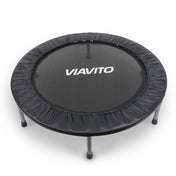Music is a great mood creator and mind stimulator. And taking the time to create a personal soundtrack for your exercise program can have an incredible influence over how long you work out and how hard you push yourself.
Research into the relationship between music and sports performance pre-dates the MP3 player by a long chalk. One of the first studies into the effects of music was undertaken in the USA in 1911. Since then countless scientists have concluded it enhances speed, strength and stamina. So much so that the USA Track & Field governing body banned athletes from using portable music players in distance racing “to ensure safety and prevent runners from having a competitive edge.”
So before you build your perfect playlist, here are some facts and pointers to ensure the track list you create motivates you to the max.
Music delays fatigue
When exercising, the human body is constantly monitoring itself and calculating when fatigue is likely to hit. But if the mind is preoccupied with listening to music it is less likely to pay attention to the production of sweat, the increase in heart rate, and the high levels of lactate in the body.
And when the body finally admits it’s tired, having a powerful song at the same time can give you the push you need to get past the wall and keep going.
So, adding any music to your workout will give you greater staying power.

Music builds exertion
Many PTs use PLE (Percieved Level of Exertion) to assess client progress and build their goals. But just as music distracts us from levels of fatigue it also skews our PLE, making us think we’re not working as hard as we would without a soundtrack.
So if you want to push yourself to work at 8/10 you’ll be closer to 10/10 with some great music playing in your ear.
Music encourages movement
It’s human nature to move when you hear music, from a tap of the foot to a full on turn on the dancefloor this so-called ‘rhythm response’ is common to us all.
From the beginning to the end of a session playing music that personally makes you want to wiggle will keep you moving even when the going gets tough.
Music boosts mood and locks it in your memory
Obviously, there are some sombre exceptions, but few would pick a funeral song when they’re off for a run. Songs that have the feel-good factor will improve your mood and those positive vibes will feed through to ensure the exercise you undertake is performed with positivity. As a consequence, you’ll soon beat your personal best, whatever it may be.
Many people like to have an anthem for exercise, which, according to Neuro Linguistic Programming, may serve over time as an anchor whereby those feel good feelings and the endorphins of the exercise are remembered in the subconscious brain. After a short period of time you only need to hear the song in question to evoke those fantastic feelings, making it an even more powerful motivational tool. And there’s more good news because the more you hear your anthem, the more those feelings will build.
Beats Count
The beats per minute (BPM)of the tracks you chose are also highly influential. If you want to calculate ahead, you can really drive your performance around the music you choose. Many music publishers include BPM in track info, and there are a growing number of apps that source music by BPM for all kinds of exercise to music.
On some tracks, the pace of the lyrics is faster than the BPM, as with many rap tracks, so they may make equally good pacemakers as the brain goes with the voice rather than the drums.
If you’re using an indoor bike 120-130 BPM is good for high resistance pedalling, while a 140-150 BPM track is great for a cycler’s sprint. If you’re training for a run they say songs with 180 BPM will get you to a mile in seven minutes and if you’re training towards that goal then start off with songs from 120-130 bpm and gradually build.
If the BPM is behind your achievable speed though, the music you play may have the reverse effect and slow you down, so use apps that monitor your speed to assess whether this is the case and update your soundtrack accordingly.
Once you’ve got your music together get your kit on and go, it’ll be your best workout for a long while…


